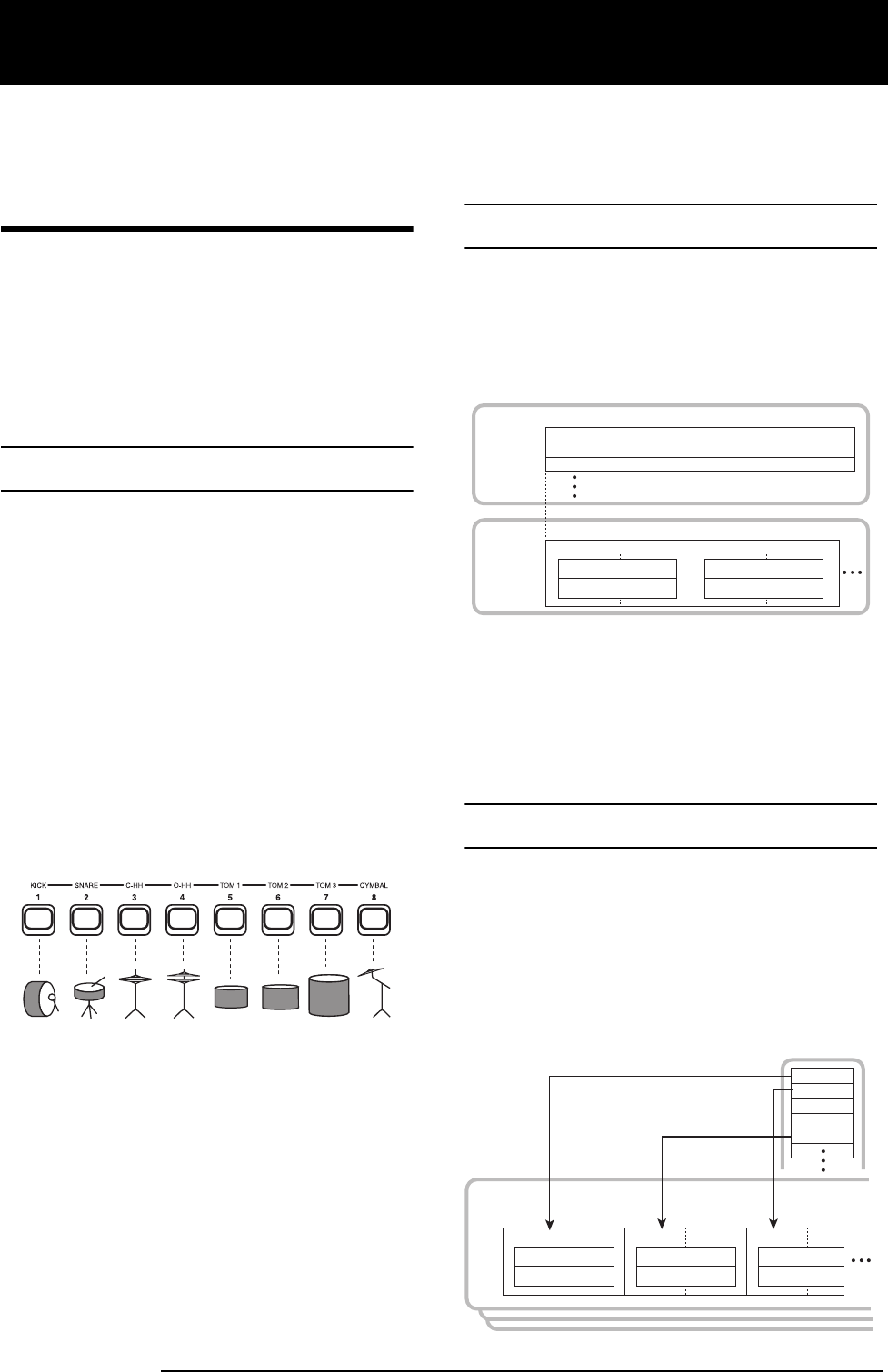
Reference [Rhythm]
ZOOM MRS-802
77
About the rhythm section
The rhythm section of the MRS-802 contains a variety of
drum sounds. The section can be operated in
synchronization with the recorder or as an independent
drum machine. Here we will explain the basic concepts and
terms that you need to know in order to use the rhythm
section.
Drum kits
The MRS-802 incorporates various drum and percussion
sounds which are combined into drum kits. A drum kit is a
set of 24 drum/percussion sounds. The MRS-802 contains
43 different drum kits of which you can select one at a time.
A drum kit can be used as source for rhythm
accompaniment, and it can also be played using an external
MIDI keyboard or sequencer. The status keys on the top
panel can also be used to play the drum/percussion sounds
of the currently selected drum kit.
The output signal of the drum kit (drum track) is connected
to the internal mixer. Similar to ordinary audio tracks 1 - 8,
you can adjust parameters such as volume, balance, and EQ
for the drum track and apply the send/return effect.
Rhythm patterns
A newly created project contains accompaniment patterns
for up to 99 measures each. These accompaniment patterns
are called “rhythm patterns”. The project has more than 400
such patterns to choose from.
Besides using a pattern as is, you can edit a portion of it, or
create your own patterns in empty rhythm pattern slots. The
rhythm patterns you create or modify are saved on the hard
disk as part of the project.
Rhythm songs
Multiple rhythm patterns arranged in a desired order of
playback are collectively called a “rhythm song”. In a
rhythm song, you can program the rhythm pattern data, beat
data, tempo data etc. (as “events”) , to create the
accompaniment for an entire song.
Up to 10 rhythm songs can be saved in each project.
Recorder
Rhythm
section
Track
Rhythm pattern Rhythm pattern
1234
123456
PATTERN A PATTERN E PATTERN B
PATTERN A
PATTERN B
PATTERN C
PATTERN D
PATTERN E
Measure
number
Rhythm
song
Reference [Rhythm]
This section explains the functions and operation of the rhythm section, which uses internal drum sounds to generate backing
performances.


















